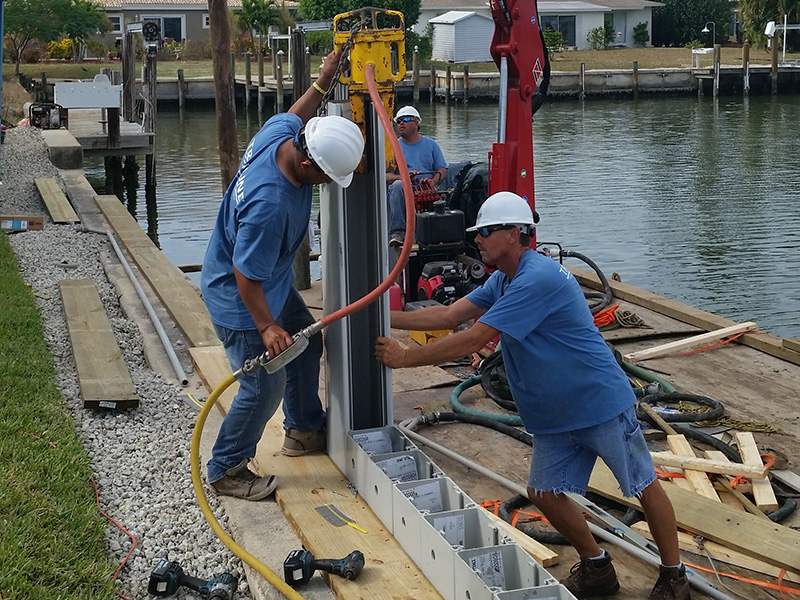2 Important Factors in the Cost of a Seawall
This article explains 2 important factors that go into the cost of a seawall or bulkhead. The first is the importance of a soil report. The second is the anchor system. Waterfront property owners should learn more about these 2 items before purchasing a new seawall or bulkhead. Your property needs to be protected from erosion due to extreme weather conditions, such as rising water from king tides or storm surges from tropical storms and hurricanes. Usually insurance does not cover the cost of seawall or bulkhead damages.
Build Your Seawall or Bulkhead Right the First Time
A good seawall is going to be expensive and buyers need to be aware of what questions to ask when hiring a marine contractor to install a new seawall. Most people want to spend the least amount of money and have peace-of-mind it will work. So, it is really important to build your seawall or bulkhead right the first time.
A stable seawall depends on the interaction between the wall, its anchors and the surrounding soils. The pressures that the soil applies to these components is the starting point for any engineering analysis of a seawall installation. Different soil types have different properties which affect this wall-soil and anchor-soil interface. Investing in a subsurface soil investigation is the only way to determine these soil characteristics and is key to ensuring a good wall design that is stable while keeping cost at a minimum.
Obtain a Soil Report
Estimating the cost of a seawall or bulkhead takes both experience and science. It should first start with the science by obtaining a soil report. In order to give a more accurate estimate with the least surprises during the job, and install the appropriate wall, good contractors will obtain a soil report to determine three things:
- necessary length or dept of the panels or sheet piling
- length, size and type of tie back anchors
- type of soil they will be dealing with
Essentially, the cost of a seawall increases as 1) the soil gets harder and, 2) the load on the wall gets larger. So, If the length of the panel or pile is too short when installed, the wall will most likely fail at the worst time.
Proper Tie Back or Anchor System
Seawalls or bulkheads carry a heavy load, especially when it rains a lot and the water is trying to drain out to the canal or waterway. So, the length and size of the tie back anchors are important to be strong enough to hold the load. In addition, depending on the upland improvements such as swimming pools and buildings, only certain types of anchors can be installed.
Avoid On-the-Job Soil Surprises
Lastly, the soil report which reviews the soil under the water, will tell the civil engineer and contractor how dense the soil is and if there is rock. If a soil report has not been completed, this is one area that contractors will incur “surprises” because what is under the surface is not visible and unknown.
Rocky soil conditions will increase the cost of a seawall installation because it is difficult to drive most seawall materials. Typically, steel sheet pile material can be driven in rock, which is very expensive. However, for a more cost-effective solution, the Truline seawall system can be installed in rocky soil conditions. One benefit of the Truline system is if the soil condition varies on the job site, Truline can be driven in the ground and can be pin piled at any point in the wall, if rock is incurred. This saves time and money.
Truline Seawall System Offers Job Site Versatility
The latest seawall innovation in over 30 years, the Truline seawall and dock pile system, offers the best of 2 proven materials – a steel-reinforced concrete wall within a vinyl sheet pile form. Truline can be ordered to the proper lengths needed (unlike precast concrete panels) and can be installed in rocky soil conditions with its pin-pile application, making it one of the most cost-effective and versatile solutions. For more information on the Truline seawall, bulkhead and dock pile system, visit www.truline.us.

